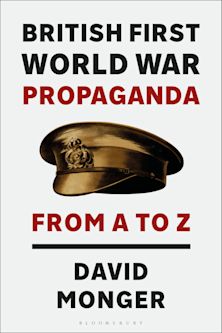- Home
- ACADEMIC
- History
- First World War
- POWs and the Great War
You must sign in to add this item to your wishlist. Please sign in or create an account
Description
Joint Winner of Fraenkel Prize for Contemporary History 2001, London. Winner of Talmon Prize, Israel, awarded by the Israeli Academy of Sciences.
Although it was one of the most common experiences of combatants in World War I, captivity has received only a marginal place in the collective memory of the Great War and has seemed unimportant compared with the experiences of soldiers on the Western Front. Yet this book, focusing on POWs on the Eastern Front, reveals a different picture of the War and the human misery it produced. During four years of fighting, approximately 8.5 million soldiers were taken captive, of whom nearly 2.8 million were Austro-Hungarians.
This book is the first to consider in-depth the experiences of these prisoners during their period of incarceration. How were POWs treated in Russia? What was the relationship between prisoners and their home state? How were concepts of patriotism and loyalty employed and understood? Drawing extensively on original letters and diaries, Rachamimov answers these and other searching questions. In the process, major omissions in previous historiography are addressed. Anyone wishing to have a rounded history of the Great War will find this book fills a major gap.
Table of Contents
Acknowledgements
List of Abbreviations
Introduction
1. Clio's Veil
2. Historiographic Contexts
3. Becoming Prisoners of War
4. The Creation of the Austro-Hungarian POW Problem
5. Austro-Hungarian POWs in Russia: A Quantitative Overview
6. Becoming POWs: The View from Below
7. The Hague Convention and the Treatment of POWs: Mission and Omissions
8. Prisoner of War Camps in World War I and the 'Barbaric' Twentieth Century
9. The Legal Framework
10. The 'Prototype' Thesis
11. The Treatment of POWs in Russia
12. Prisoner of War Camps and other Places of Internment
13. Living Conditions in POW Camps
14. Prisoners of War as Labor
15. Propaganda and Recruitment Among the Prisoners
16. The Treatment of POWs and the Perception of World War I
17. In Search of the 'Good and Loyal Prisoner': The Austro-Hungarian Censorship and the POWs
18. Patriotism in a Multi-National State
19. The Austro-Hungarian POW Censorship
20. Austro-Hungarian POWs, the Censorship and the Issue of Loyalty
21. The Emperor's Clothes: The Austro-Hungarian POW Relief Effort
22. POW Relief in World War I: The Uniqueness of the Eastern Front
23. The Austro-Hungarian POW Material Relief
24. The Austro-Hungarian Nurses
25. Imperial Identities and Personal Concerns: The Perspective of the Prisoners
26. Repatriation and the Repatriation System (Heimkehrwesen)
27. Prisoner of War Letters and their Usefulness as a Historical Source
28. The Relief Effort: The Prisoners' Perspective
Epilogue: Captivity in the Collective Remembrance of the Great War @ The Emergence of a Commemorative Pecking Order
Bibliography
Index
Product details
| Published | 04 Mar 2014 |
|---|---|
| Format | Ebook (PDF) |
| Edition | 1st |
| Extent | 272 |
| ISBN | 9781845206321 |
| Imprint | Berg Publishers |
| Illustrations | 20 b&w illustrations, bibliography, index |
| Series | The Legacy of the Great War |
| Publisher | Bloomsbury Publishing |
About the contributors
Reviews
-
Based on several years of research in Austrian, German, and Russian archives, this book brilliantly analyzes the problems, suffering and occasional joys of millions of Germans, Austrians, Hungarians, Czechs, Poles, and other nationalities whom World War I thrust as prisoners of war into Siberia. Alon Rachamimov shows, contrary to earlier historians, that the ethnic hatreds that characterized East Central Europe in the interwar period did not originate from the POW camps; rather, the prisoners got along better with one another than the tsarist authorities would have liked.
Istvan Deak, Columbia University, USA
-
Covers new ground and has very suggestive things to say about the way prisoners of war become forgotten people in the narratives constructed after the war by soldiers themselves. It is also valuable in adding to the as yet thin literature on the war on the Eastern Front, and to an understanding of the cultural life of prisoners.
Jay Winter, Columbia University



































